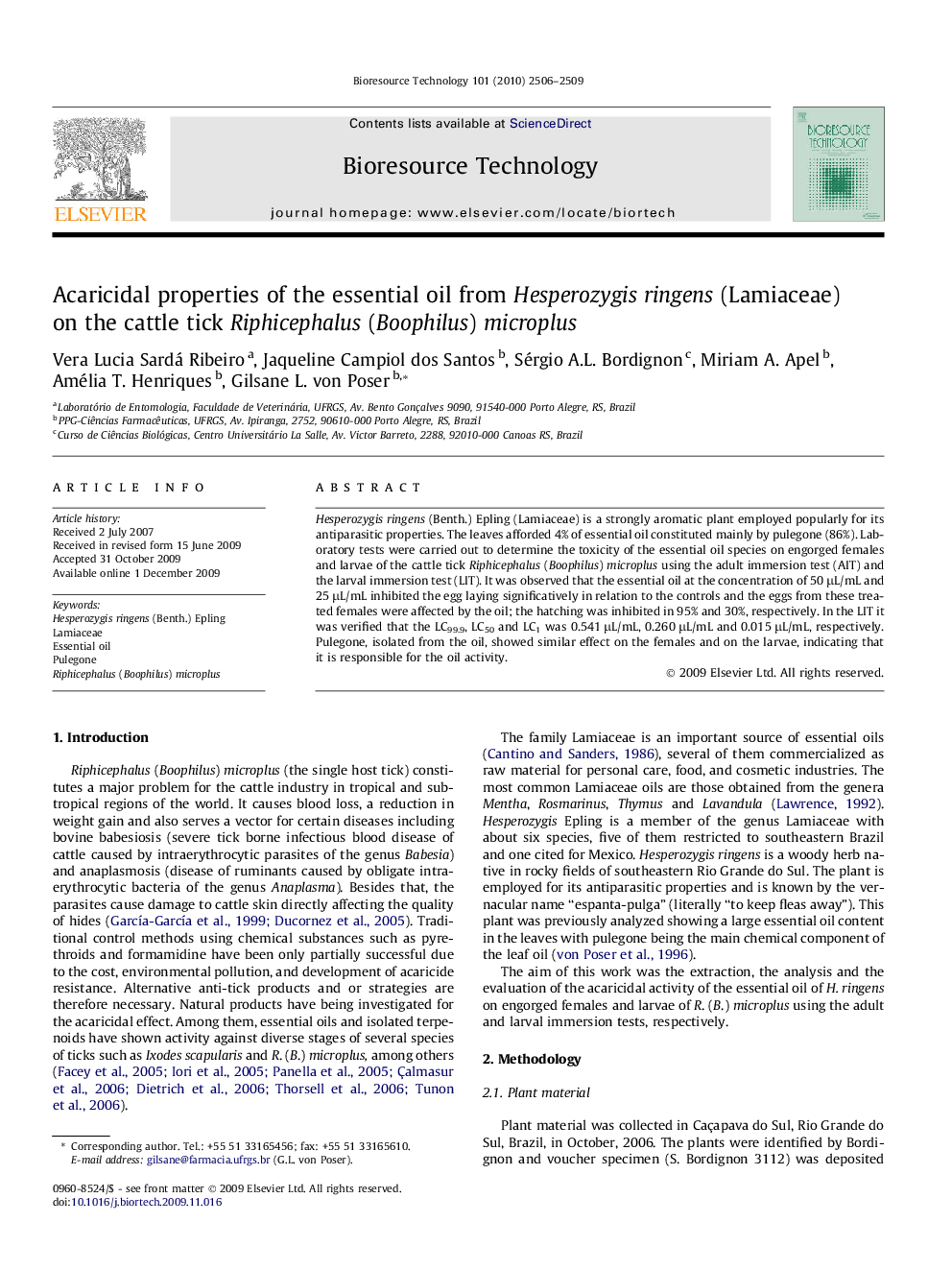| Article ID | Journal | Published Year | Pages | File Type |
|---|---|---|---|---|
| 683888 | Bioresource Technology | 2010 | 4 Pages |
Hesperozygis ringens (Benth.) Epling (Lamiaceae) is a strongly aromatic plant employed popularly for its antiparasitic properties. The leaves afforded 4% of essential oil constituted mainly by pulegone (86%). Laboratory tests were carried out to determine the toxicity of the essential oil species on engorged females and larvae of the cattle tick Riphicephalus (Boophilus) microplus using the adult immersion test (AIT) and the larval immersion test (LIT). It was observed that the essential oil at the concentration of 50 μL/mL and 25 μL/mL inhibited the egg laying significatively in relation to the controls and the eggs from these treated females were affected by the oil; the hatching was inhibited in 95% and 30%, respectively. In the LIT it was verified that the LC99.9, LC50 and LC1 was 0.541 μL/mL, 0.260 μL/mL and 0.015 μL/mL, respectively. Pulegone, isolated from the oil, showed similar effect on the females and on the larvae, indicating that it is responsible for the oil activity.
